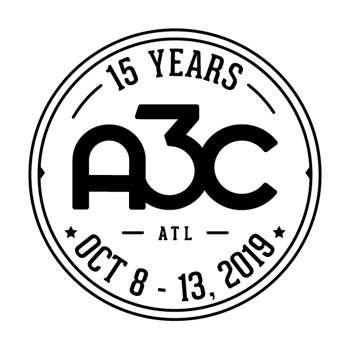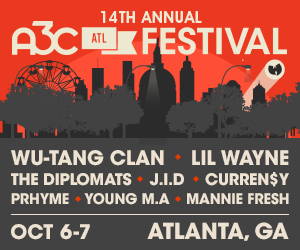
Check out Bad-Perm.com writer and A3C Panelist Erin Lowers thoughts on participating in the "Regional Sound: Does It Still Exist?" panel we had this year at the festival...
Last month, I had the pleasure of being a part of one of several A3C Festival panels in Atlanta: “Does Regional Sound Still Exist?” The purpose of the panel was to discuss how sound in hip-hop has been appropriated, re-appropriated, recycled and revamped in today’s technological world. Living in the technological era that we do, it is not only important to understand how regional sound is invented, but also to know how to preserve it.
As A3C panel director, Tom White states, “regional sound is getting a collective glimpse into another area’s language, customs, fashion and culture through music. Whether it’s a neighbourhood, city or even another country.” With that being said, the concept of regional sound seemingly breaks down into three categories: production, language and style. The production is the forefront of any sound and has often presented distinctive regional sounds allied with a specific culture. Likewise, the language used in music is another cultural symbol indicative of the area that the artist is from. Lastly, the style of music is a supporting pillar to that region’s culture and sets it apart from those around it. But what happens when those lines are completely blurred and no longer actively practiced?
Curtis Harris, an A&R for Atlantic, started the discussion by bringing up Kendrick Lamar’s “Swimming Pools”. It just so happens that “Swimming Pools”, Kendrick’s first (and only) track to get heavy rotation on commercial airwaves, was produced by Toronto’s T-Minus. That’s great and all, but Curtis asked, “why would a dominant West Coast artist use a producer not only from another region, but another country?” Not only is this a valid question, it’s also one that embodies this entire discussion.
Shortly after Kendrick’s album dropped, I tweeted about how Kendrick’s “Compton” isn’t how a West Coast track with that title should sound, and that I found it puzzling that a West coast producer wasn’t used on it. I mean, the word Compton represents more than a place. It represents an attitude and a way of life. Just Blaze, who did produce the track, tweeted this back:
In the past, countless artists were required to work with the people around them; (from producers to artists, engineers to writers, etc), solely due to proximity and the lack of technology that allows us to share files today. (Well, not all. For example, The Bomb Squad and Ice Cube are an exception to this statement.) But like Just Blaze said, a track called “Compton” wouldn’t have been created without the talents of an East coast producer, both production-wise and lyrically.
With Blaze’s statement at the forefront, does this bi-coastal marriage make the song any less genuine to that or in that region? That’s definitely up for debate. While St. Louis artist Tef Poe said “If I put out a record that sounds too St. Louis, it stays in St. Louis”, New York rapper Torae brought up the fact that he’s been in meetings with the suits and they’ve asked him candidly “Where’s your Southern record?” How can one artist from the Southern region be ‘too Southern’ while another is asked to become Southern? Unfortunately, A&Rs aren’t (and rarely ever were) known to understand regional sound. Though, Curtis Harris responded by stating that it is about marketability. How do you market a product in 2012 without adapting to every market available? It’s almost necessary to have the trap track, dance track, R&B track and anthem that appeal to several different regions to be commercially successful.
On the flipside, do regional sounds even define a region? Lyric Jones, an artist from ATL, brought the notion of ‘regional sound’ being a very broad concept. Using the South as an example, Lyric firmly stated that every city or State has their own spin on what the “Southern sound” is made up of. She mentioned how someone in Atlanta, GA isn’t making the same music as someone in Huntsville, AL, and someone in Houston, TX isn’t messing with the same production than someone in New Orleans, LA does. With DJ Toomp heavily agreeing, the concept of regional sound is far more complex than what fans see, much less the suits. It was quickly noted that there’s a plurality of sounds and concepts in these defined regions, almost ruling out the notion that there is such a thing as ‘regional sound’ in 2012.
So now what? Between the file sharing services that are offered to us and the cross-country influences, what creates a space for regional sound? Dominick Brady, the clever moderator of the entire panel, followed that question with a question about the necessity that regional sounds adapt and evolve to the competition around them. Tef Poe chimed in saying whether he can spit or not, the real question will always remain“Can he compete with the dude that’s the most lyrical cat from NYC?” What threat does that hold on regional sound?
I’m convinced that regional sound does exist, but I’m unsure whether this concept will be relevant a decade from now. Perhaps this is an article that requires stripping back several layers to truly understand regional sound. Perhaps we’ve just turned our backs on the local sounds of our individual regions because artist themselves have turned their backs on it. A friend of mine once said, “I may be a rapper from Toronto, but I’m not a Toronto rapper.” If that’s the last thing to be said in this article, maybe the numerous artists that move forward to other regions and the media that are supposed to support it have left the concept of regional sound in a cloud of dust behind them.
Update: I brought this to the top again for those that missed it. Really great piece! - Obese



